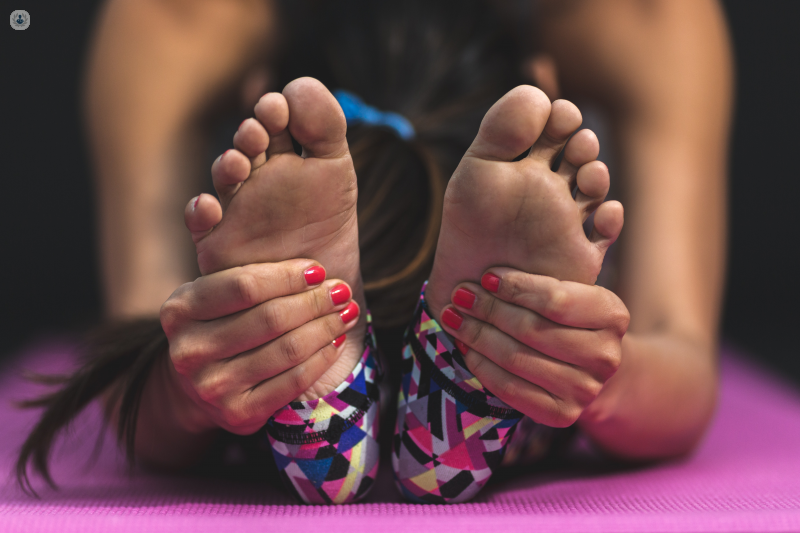How to avoid and treat heel pain: expert tips for relief
Escrito por:Heel pain is a common issue that affects individuals of all ages and activity levels. It is often caused by factors such as poor footwear, overuse, or underlying medical conditions. The most frequent culprit behind heel pain is plantar fasciitis, an inflammation of the plantar fascia—a thick band of tissue connecting the heel bone to the toes.
Other common causes include Achilles tendinitis, heel spurs, or bursitis. Fortunately, there are effective strategies to both prevent and treat heel pain. Here, distinguished consultant orthopaedic surgeon, Mr Ian Gill, tells us how heel pain is usually treated and managed.

Heel pain prevention
One of the simplest preventive measures is wearing proper footwear. Shoes that offer sufficient cushioning and arch support can significantly reduce the risk of developing heel pain. Poorly fitting shoes or those with inadequate support, such as high heels, place extra strain on the heel, leading to discomfort.
It's essential to choose shoes that support the arches and provide shock absorption. In addition to footwear, regular stretching is key in maintaining flexibility and preventing heel pain. Stretching the calf muscles and the plantar fascia itself can help keep these tissues limber and less prone to injury. Exercises like calf stretches, toe stretches, or rolling a tennis ball under the foot are easy and effective methods to promote flexibility.
Maintaining a healthy weight is another important factor in preventing heel pain. Excess body weight places increased pressure on the feet, especially the heels, which can lead to pain and discomfort over time. Gradually increasing physical activity levels can also help avoid overuse injuries to the feet and heels. Rapidly ramping up the intensity of workouts or activities can put undue stress on the heels, leading to inflammation and pain.
If heel pain does occur, rest and ice are simple yet effective treatments. Resting the foot and applying ice for 15-20 minutes several times a day can reduce inflammation and alleviate discomfort. Stretching and strengthening exercises for the foot and calf muscles are also helpful in easing pain and preventing recurrence.
In more severe cases, using orthotic inserts or engaging in physical therapy may be necessary to provide additional support and recovery. By taking these preventive and treatment measures, it is possible to manage and alleviate heel pain effectively.


